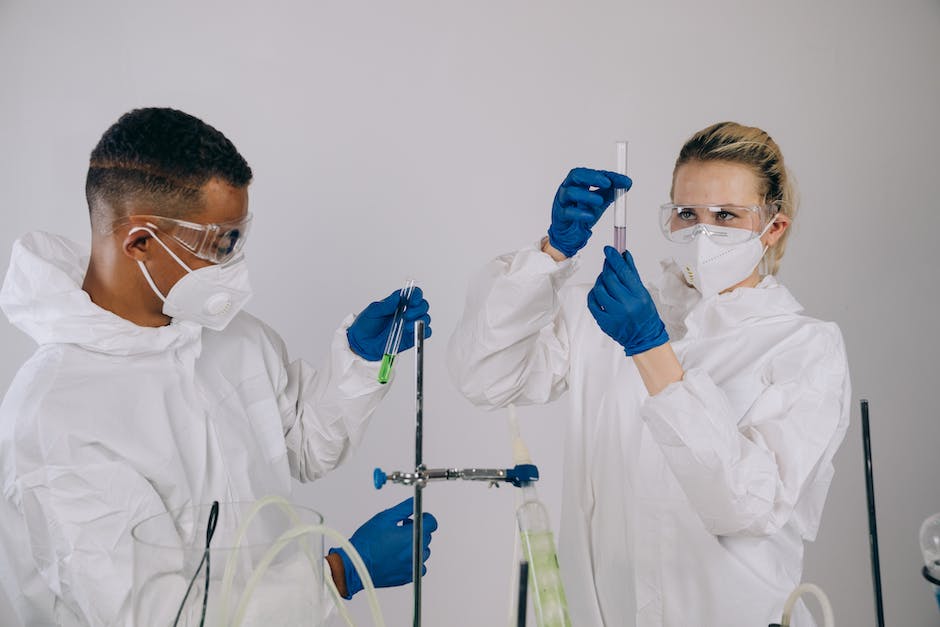As an expert in skincare, I understand the frustration that comes with dark spots and uneven skin tone. These blemishes can make us feel self-conscious and affect our confidence. But fear not! There is a powerful ingredient that can help improve the appearance of dark spots and achieve a more even complexion. I’m talking about Polyhydroxy acids (PHAs).
What are Polyhydroxy Acids?
Polyhydroxy acids, also known as PHAs, are a group of chemical exfoliants that work similarly to AHAs (Alpha Hydroxy Acids) such as glycolic acid and lactic acid. They are often added to skincare products to treat various skin concerns like acne, scars, dryness, and signs of aging.
One of the standout benefits of PHAs is their effectiveness in improving the appearance of dark spots and uneven skin tone. These acids have the ability to lighten and fade hyperpigmentation, giving you a more radiant complexion.
How Do PHAs Help Fade Dark Spots?
PHAs work by gently exfoliating the skin and accelerating cell turnover. This process helps to shed dead skin cells and reveal fresher, brighter skin underneath. By promoting this cellular renewal, PHAs can effectively fade dark spots and promote a more even skin tone.
Furthermore, PHAs have antioxidant properties, which can help reduce inflammation and neutralize damaging free radicals. These free radicals can contribute to the development of dark spots and other signs of aging, so combating them is crucial in achieving a clearer complexion.
How to Incorporate PHAs for Dark Spots into Your Skincare Routine
If you’re looking to incorporate PHAs into your skincare routine to tackle dark spots, here’s a simple step-by-step guide to get you started:
- Cleanse: Start by cleansing your face with a gentle cleanser to remove any dirt or impurities.
- Exfoliate: Use a PHA-containing exfoliating toner or serum to gently exfoliate your skin. Look for products with gluconolactone, galactosen, or lactobionic acid as the main PHA ingredient.
- Moisturize: Follow up with a hydrating moisturizer to keep your skin nourished and protected.
- Sun Protection: Apply a broad-spectrum sunscreen with at least SPF 30 every morning to shield your skin from harmful UV rays. This step is essential as sun exposure can worsen dark spots.
Remember, consistency is key when using PHAs for dark spots. It may take some time to see noticeable results, so patience is important. If you have sensitive skin, it’s always a good idea to do a patch test before incorporating any new product into your routine.
How to Make Your Own PHA-based Dark Spot Cream or Face Mask at Home
If you prefer a DIY approach, you can make your own PHA-based dark spot cream or face mask at home. Here’s a simple recipe using natural ingredients:
Ingredients:
- 1 tablespoon of raw honey
- 1 tablespoon of plain yogurt
- 1 teaspoon of glycolic acid (available in some health stores or online)
Instructions:
- Mix all the ingredients in a small bowl until well combined.
- Apply the mixture to your cleansed face, focusing on areas with dark spots.
- Leave it on for 15-20 minutes.
- Rinse off with lukewarm water and pat dry.
- Follow up with your regular skincare routine, including moisturizer and sunscreen.
This DIY mask combines the nourishing properties of honey and yogurt with the exfoliating effects of glycolic acid. It can help fade dark spots over time with regular use.
Remember, while DIY remedies can be effective, it’s always a good idea to consult with a dermatologist before trying any new ingredients or treatments.
Incorporating PHAs into your skincare routine can be a game-changer when it comes to combatting dark spots and achieving a more even complexion. With consistent use and proper protection from the sun, you can say goodbye to uneven skin tone and hello to a radiant glow!
Taking the First Step Towards Clearer Skin
Now that you have a better understanding of Polyhydroxy acids and their benefits for fading dark spots and improving skin tone, it’s time to take action. Incorporate PHA-based products or try out a homemade PHA mask to start your journey towards clearer, more radiant skin. Remember, consistency and patience are key, so don’t give up if you don’t see immediate results. Stick to your routine and give the PHAs time to work their magic. Before you know it, those dark spots will become a distant memory, and you’ll be flaunting your renewed confidence!
Uncovering the Secret Powers of Polyhydroxy Acids for Fading Dark Spots
Hey there! If you’re like me and have been exploring every avenue to deal with dark spots, you’ve probably heard a thing or two about Polyhydroxy acids, also known as PHAs. I dove into the research to confirm the buzz around these skincare champions, and here’s the lowdown.
So, first things first, I stumbled upon a study in the Journal of the American Academy of Dermatology where they checked out a cream with 10% Gluconolactone. I had to sit down for this one—82% reported that their dark spots were fading away. Imagine that! An impressive 88% noticed a more even skin tone, and get this, a whopping 100% felt their skin looked brighter and more luminous. Count me in!
- Dark spots fading: 82%
- More even skin tone: 88%
- Brighter, luminous skin: 100%
And here’s something else that caught my eye in the Journal of Aesthetic Nursing. PHAs are not just one-trick ponies; they also help strengthen the skin’s barrier. A tough barrier means we’re talking less irritation and more protection for our skin—that’s a bonus for those of us looking for gentle options.
Now, if you’ve dealt with sensitive skin or rosacea, much like I have, you’ll relate to this personal story I found on ejollify.com. The author picked PHAs for their gentle exfoliation, taming fine lines, and fading dark spots without upsetting their skin. And when they say their skin has softened and large pores minimized, you can’t help but want in on that action, right?
PHAs are not just friendly for the skin but also come with the added perks of wrinkle reduction and promoting collagen growth. It’s like finding a kindred spirit in the form of skincare.
Besides, who doesn’t love a good collaboration? Just like PHRs (plant homologues of the repressor) team up with other elements in nature to bring balance, spotted in the research from Plant, cell & environment, PHAs have a similar communal vibe—they get along great with other skin care ingredients.
So, let’s raise a glass (of water – gotta stay hydrated for that skin glow!) to PHAs. These unsung heroes are doing the most for our dark spots with little to no drama. I’m down for that.
Answering your Questions on Polyhydroxy Acids for Dark Spots
Which acid is recommended for treating dark spots?
Tartaric acid is recommended for treating dark spots. It helps in treating acne scars, acne, melasma, hyperpigmentation, dry skin, sun-damaged skin, and fine lines.
Does alpha hydroxy acid effectively target and remove dark spots?
Yes, alpha hydroxy acid effectively targets and removes dark spots. It can help reduce the appearance of dark spots caused by sun damage and exfoliates the skin to clear blackheads and whiteheads. AHAs like lactic and glycolic acid are particularly effective in brightening dark spots and smoothing dry skin. However, it’s important to note that the effectiveness of AHA on dark spots may vary depending on individual skin conditions.
What are the benefits of using polyhydroxy acid for skin?
The benefits of using polyhydroxy acid for skin include gentle exfoliation, strengthening of the skin’s moisture barrier, antioxidant and humectant properties, and post-procedure usage. Polyhydroxy acid is a mild chemical exfoliant that helps remove dead skin cells and promotes supple and radiant skin. It also hydrates the skin, reduces the appearance of fine lines, and is suitable for sensitive skin.
Is it safe to use polyhydroxy acid on a daily basis to treat dark spots?
No, it is not safe to use polyhydroxy acid on a daily basis to treat dark spots. PHAs are more gentle than other acids and can be used three to four times a week, but daily use may cause skin irritation or damage. It is important to follow safe usage guidelines to avoid any potential harm.
Can anyone share their experiences using polyhydroxy acids to fade dark spots on Reddit?
Yes, users on Reddit have shared positive experiences using polyhydroxy acids (PHAs) to fade dark spots. Some have reported that PHAs, such as an invisible peeling booster, have helped to remove dead skin cells and boost collagen production, resulting in smoother and more even-toned skin. PHAs are known for being moisturizing while also providing exfoliating and antioxidant properties, making them effective in dealing with pigmentation and fading dark spots.
How can polyhydroxy acids be used to effectively treat dark spots on the face?
Polyhydroxy acids can effectively treat dark spots on the face by lightening and brightening the skin tone. These chemical exfoliants, including gluconolactone, lactobionic acid, and galactose, not only hydrate the skin and reduce signs of aging but also have the ability to improve the appearance of dark spots and uneven skin tone. Unlike alpha or beta hydroxy acids, which treat acne and fine lines, polyhydroxy acids specifically target dark spots, helping to fade them and promote a more even complexion.
What are some popular products that contain polyhydroxy acid?
Some popular products that contain polyhydroxy acid include Ameliorate Resurfacing Facial Cleanser, Medik8 Press & Glow, OLEHENRIKSEN PHAT Glow Facial Mask, Neutrogena Skin Balancing Milky Cleanser, and COSRX Low pH PHA Barrier Mist. These products help repair skin, exfoliate away dead skin, and reduce the appearance of skin damage.
Have you tried using a polyhydroxy acid serum for dark spots?
Yes, polyhydroxy acid serums can be effective for treating dark spots and hyperpigmentation. They help to lighten skin, improve texture, and brighten skin tone. Additionally, polyhydroxy acid serums have been clinically proven to specifically target and reduce the appearance of dark spots.
Can you provide examples of different types of polyhydroxy acids available for treating dark spots?
The different types of polyhydroxy acids (PHAs) available for treating dark spots include gluconolactone, galactose, and lactobionic acid. These PHAs are commonly found in resurfacing cleansers and serums.
What are the specific benefits of using polyhydroxy acid as an exfoliator for the skin?
The specific benefits of using polyhydroxy acid as an exfoliator for the skin include treating skin ageing and hyperpigmentation, exfoliating dead skin cells, and promoting a smoother, more even skin texture. Additionally, polyhydroxy acid acts as a gentle moisturizer and provides some protection against UV rays.
Hello, I'm Kristen Blake—a passionate advocate for radiant, youthful skin at any age. At 46, my life's work blooms from an unquenchable curiosity about the active ingredients that promise us the elixir of youth in a bottle. My days are spent immersed in the latest scientific research; every study, every breakthrough, fuels my journey.
But for me, the pursuit is more than academic. I test the wisdom of science on my own skin, embracing each wrinkle as a whispering challenge, and every age spot as a riddle to solve. As I decode the secrets of anti-aging, my experience becomes a beacon for those who seek guidance in the graceful art of growing older without losing their sparkle.
Join me as I share my discoveries and help you navigate the ever-evolving landscape of skin care. Together, we'll celebrate beauty that doesn't fade, but matures with wisdom and self-care.




